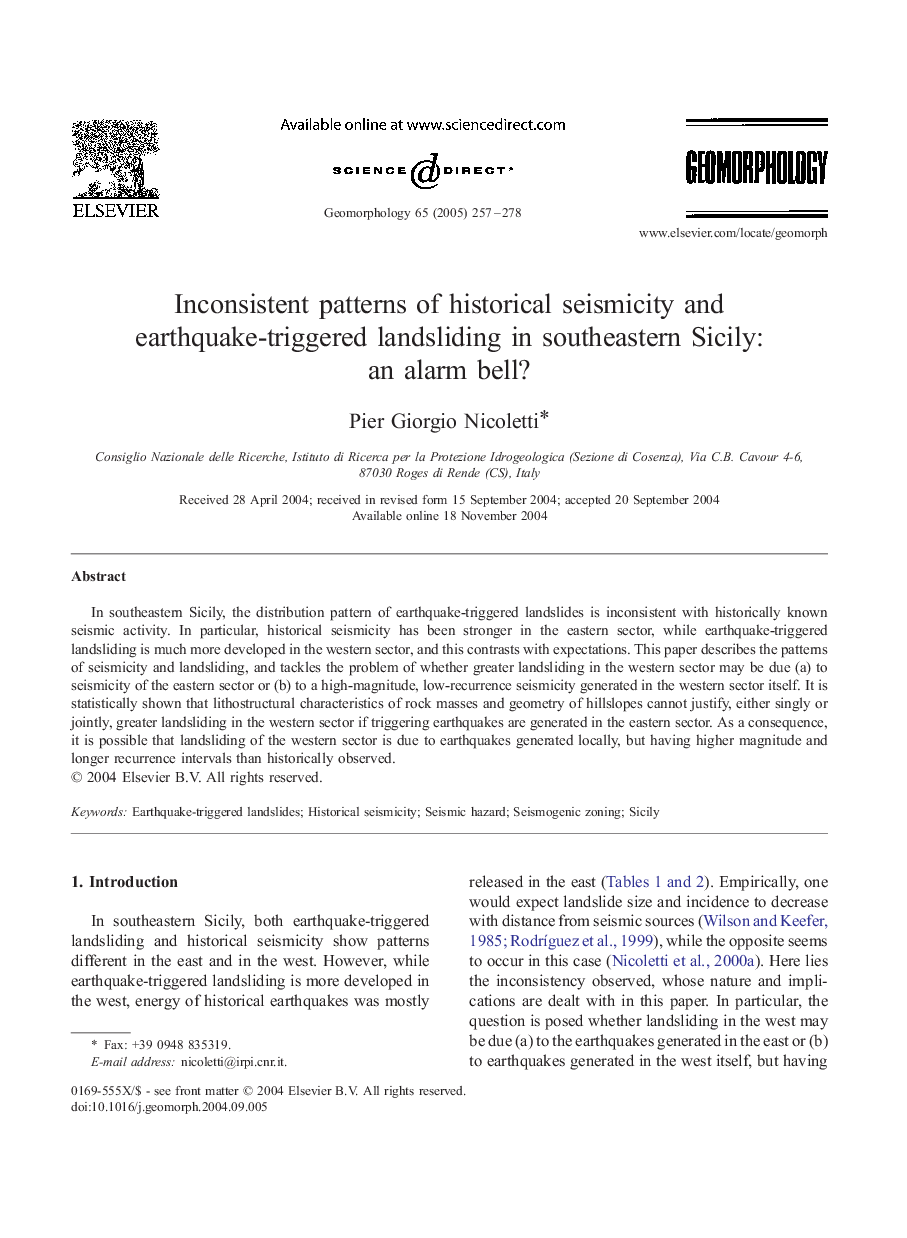| Article ID | Journal | Published Year | Pages | File Type |
|---|---|---|---|---|
| 9525013 | Geomorphology | 2005 | 22 Pages |
Abstract
In southeastern Sicily, the distribution pattern of earthquake-triggered landslides is inconsistent with historically known seismic activity. In particular, historical seismicity has been stronger in the eastern sector, while earthquake-triggered landsliding is much more developed in the western sector, and this contrasts with expectations. This paper describes the patterns of seismicity and landsliding, and tackles the problem of whether greater landsliding in the western sector may be due (a) to seismicity of the eastern sector or (b) to a high-magnitude, low-recurrence seismicity generated in the western sector itself. It is statistically shown that lithostructural characteristics of rock masses and geometry of hillslopes cannot justify, either singly or jointly, greater landsliding in the western sector if triggering earthquakes are generated in the eastern sector. As a consequence, it is possible that landsliding of the western sector is due to earthquakes generated locally, but having higher magnitude and longer recurrence intervals than historically observed.
Related Topics
Physical Sciences and Engineering
Earth and Planetary Sciences
Earth-Surface Processes
Authors
Pier Giorgio Nicoletti,
